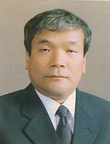
An international research team, including South Korean physicists, claimed on Saturday, June 12, that it has secured experimental evidence of elementary particles called neutrinos actually having some weight, breaking the decades-long belief that neutrinos are mass-less. An experiment showed that one type of neutrino is transformed into another, a phenomenon which can happen because the particle has mass, according to the South Korean research team led by Kim Jae-yool, a physics professor at Chonnam National University and Kim Soo-bong, a professor at Seoul National University.
The experiment involved shooting an artificial beam of muon neutrinos at Super-Kamiokande in central Japan, an underground neutrino detector run by the University of Tokyo's research institute on spaceship. Japan's High Energy Accelerator Research Organization and a team of U.S. and European scientists also took part in the research. The neutrino, a subatomic particle known to come in three types of tau, muon and electron, was assumed to have no mass in the current standard model of elementary particle physics. The neutrino is a mysterious elementary particle that has no electric charge and interacts little with any other matter. It can travel through 50 billion miles of water without interacting. On the surface of the earth, about a half of a trillion neutrinos from the sun pass through each square centimeter of area every second. Neutrino mass and lepton number violation must be a key to understand the universe. An international joint research team has recently confirmed the existence of neutrino mass.
Prof. Kim Jae-yool (Dept. of Physics, College of Natural Sciences) and Prof. Im In-taek (Dept. of Physics Education, College of Education) participated in the K2K Collaboration of several universities in the USA, Japan, and Korea. K2K, which stands for "KEK to Kamioka", is a so-called "Long baseline neutrino oscillation" experiment. KEK is a Japanese national laboratory for High Energy Accelerator Research and it is located in Tsukuba city, near Tokyo on the east coast of the main island of Japan. Kamioka is a tiny mining town on the west coast, 250 km away from KEK, and it is the site of a mine which houses the now-famous Super-Kamiokande detector.
On June 12, the members of the K2K Collaboration described new results from a joint experiment designed to test whether neutrinos have mass. The K2K collaboration directed a man-made beam of neutrino particles, produced by a particle accelerator at KEK, through the earth a distance of 250 km, to the Super-Kamiokande underground neutrino detector located near Kamioka, Gifu, Japan. Prof. Kim explained that the results presented represent data accumulated by K2K from June 1999 up to May 2004. Based on a wide variety of measurements made at KEK, the number of events expected in the absence of neutrino oscillations would be 64. However, a total of 44 neutrinos from KEK have been identified in the Super-Kamiokande detector. Thus, the K2K results showed that neutrinos, known to come in three distinct varieties or flavors, changed from one flavor to another in 250 km flight which brought the differences in mass.
Neutrinos are subatomic particles associated with radioactive decay processes, and other phenomena related to the "weak interaction", one of the fundamental forces of nature. Neutrinos have no electrical charge, and until recently were assumed to be massless. In 1998, the Super-Kamiokande Experiment, a separate collaboration of physicists in Japan and the USA, presented the first data clearly indicating the existence of neutrino "oscillations". In 2002, a team of scientists from Canada, the United States and the United Kingdom announced the results of a unique new measurement of the total number of neutrinos of all known types reaching the Earth from the Sun. Using data entirely from the Sudbury Neutrino Observatory (SNO) in Canada, they are also able to determine that the observed number of electron neutrinos (the type produced by the Sun) is only a fraction of the total number. This shows with great certainty that neutrinos from the Sun change from one type to another before reaching the Earth.
The K2K experiment provides an independent test, using an artificial neutrino beam whose characteristics were first calibrated by independent detector systems. The existence of such "oscillations" indicate that at least one flavor of neutrino must have mass, whereas the Standard Model of particle physics assumes massless neutrinos. It seems inevitable that the Standard Model should have correction. The neutrino research is expected to be of help for finding out the dark material reaching 90% of universe mass.
Korean K2K Collaboration, funded by Korea Science & Engineering Foundation, has been led by Prof. Kim Jae-yool from Chonnam National University and Prof. Kim Su-bong from Seoul National University. Prof. Im In-taek from CNU joined the Korean K2K team with ten researchers and graduate students.
Prof. Kim Jae-yool, 54, graduated from the Dept. of Physics, CNU and received his master’s degree from the same department. After receiving his doctor’s degree from Korea University, he joined the CNU faculty in 1979. In 2002, he received the Distinguished Treatise Award from the Japan Society of Physics. He was also selected as the recipient of the 2003 Yongbong Academic Award.